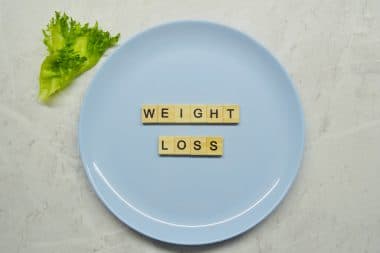Hang around health and fitness enthusiasts–or look at their magazines and websites–for any length of time and you are bound to come across the subject of a ketogenic diet. It is both extolled and condemned passionately, responsible for near immortality according to some; the source of chronic illness and early death in the opinion of others. Undisputed is the fact that people have experimented with ketosis for weight loss and robust health for many years. Results vary but, then again, so do the many impressions of what ketosis is and how it is achieved in the human body.
Ketosis in a Nut (or Lobster) Shell
Not as mysterious as it sounds to the layperson, ketosis refers to the state of your body when it burns fat–rather than carbohydrates–as its primary source of energy. Carbs, of course, are the fuel of first resort so ketosis can only occur when carbs are restricted. During the fat-burning process, chemical bodies called ketones are produced by the liver. Depending on your diet, you may go in and out of ketosis on a regular basis. The presence of ketones, and thus the action of fat-burning, can be demonstrated by blood tests, urine strips or breathalyzers. It should be noted that fat can be burned, albeit more slowly, without ketosis.
Also worth mentioning is the distinction between ketosis and the very dangerous ketoacidosis. More common among type-1 diabetics, ketoacidosis occurs because a lack of insulin prevents the body from using blood sugar for energy, causing an unhealthy build-up of ketones leading, in turn, to dehydration, severe vomiting and eventually coma. Sometimes non-diabetics can suffer from ketoacidosis because of illness, shock or trauma. On the other hand, ketosis spurred by a low-carbohydrate diet will not raise the ketones to hazardous levels. In ketosis, the body burns fat without purging other tissue.
History of Ketogenic Diets
Ketogenic diets have their roots in the ancient practice of fasting. Hippocrates, the Greek known as the “father of medicine,” praised fasting–i.e. abstaining from food and drink–as an effective treatment for epilepsy. Over the years, fasting was combined with various nutritional protocols, like vegetarianism, to figure out how to treat epilepsy over longer periods of time. With the coming of anti-seizure medicines, the dietary approach to epilepsy took a back seat until the early 20th century. Since the medications were sometimes interfering with a patient’s thinking abilities, doctors revisited the nutritional approach, tweaking it for better results.
By the 1920s, water fasting followed by a diet free of starch and sugar produced the greatest success in terms of freedom from seizures. Dr. Rollin Woodyat discovered, in 1921, that fasting followed by a diet rich in fat and low in carbs yielded by the liver three water-soluble compounds: acetoacetate, β-hydroxybutyrate and acetone, collectively known as ketones. Russell Wider, Mayo Clinic researcher, first referred to this way of eating as the “ketogenic diet.” Later, in the mid-20th century, scientists were better able to determine how much protein and carbohydrate could be tolerated while still getting all of the ketogenic benefits of the diet.
Ketosis for Weight Loss
While ketogenic eating plans were originated to treat neurological issues like epilepsy, doctors could not have failed to notice that patients–the overweight ones, anyway–were getting thinner. It made sense, on one hand, since the body was now burning fat for energy. Still, this way of eating involved high fat intake. Why were these patients burning stored fat, as well? It may be for the simple reason that most bodies are highly efficient at burning carbohydrates and less so when it comes to fat. The fat in food consumed is not sufficient for energy therefore the fat reserves are used.
What a Ketogenic Diet Looks Like
Not every low-carb diet is ketogenic although ketosis is hard to achieve without carbohydrate restriction. Generally, ketogenic regimes are characterized as high fat, moderate protein and low carbohydrate. Many other low-carb diets allow more protein than ketosis will allow; several are even low in fat calories. Ketogenic diets, on the other hand are rich in fat: butter, fat rended from meat, heavy cream and eggs. Caution must be exercised with meat, however, since it may contain too many protein grams as noted above. One difficulty for dieters is that many butchers trim most of the fat from meat before selling it. A small serving of vegetables may be included in ketogenic meals while vegetable fats like olive oil may be used liberally.
The power of this diet is in the way it simulates fasting. The liver, once emptied of glycogen (sugar) turns to ketones to fuel the brain. Those ketones come from dietary fat and, importantly, body fat. Meanwhile, the blood glucose is supplied by the breakdown of fatty acids instead of carbohydrates. As a result, the dangers of low blood sugar–common in extended fasting or starvation–are avoided. So, if fat is encouraged and carbs are kept low, where does “moderate” protein fit in?
Many low-carb dieters do not realize that protein can be converted into blood glucose and prevent ketosis from kicking in. Actually, after carbohydrates, protein is the next strongest stimulator of blood sugar. This is why low carb, high protein is not a ketogenic diet. What, then, constitutes moderate protein intake? Opinions differ but most experts say less is better. Ratios of 3:1 or 5:1 fat to protein are among the suggested dietary proportions. Dr. Ron Rosedale, a well-known metabolic specialist, for example, recommends one gram of protein for every kilogram of lean body mass. At any rate, meat lovers are advised under such parameters to focus on butter and cream, taking reasonable caution with their beef, pork and chicken portions. (You can estimate your lean body mass here.)
One final caveat, though: eating too little protein will lead to loss of muscle and disrupt metabolism. Ketogenic diets require experimentation in order to optimize nutrients.
Is There Such a Thing as Too Much Fat?
Ketogenic diets encourage high fat consumption–as high as 80 percent of total calories–but every macronutrient has a limit. Some dieters find it useful to discover their Basal Metabolic Rate–the measure of your metabolism when at rest–and base portions and amounts of fat on that. Others, however, recognize a self-regulation mechanism that comes with fat. In short, too much fat (in the absence of carbohydrates) can bring on nausea. Once aware of the tipping point with fat calories, successful ketogenic dieters are careful not to cross that threshold.
Other Applications for a Ketogenic Diet
Used successfully for weight loss and epilepsy, a ketogenic diet may be beneficial for diverse medical disorders. Since epileptic patients and bi-polar patients receive many of the same medications, scientists are considering the possibility of a ketogenic eating plan as a treatment for bi-polar depression. The diet actually works like lithium, lowering sodium presence in the cells. This helps to stabilize mood. A 2013 study published in Neurocase showed marked improvement in stability among subjects on the diet.
Neurologist and nutritionist David Perlmutter adopts ketogenic eating for his amyotrophic lateral sclerosis (ALS) patients. Also known as Lou Gehrig’s Disease, ALS brings on an incremental erosion of muscle function that eventually takes a toll on mobility, speech, swallowing and even breathing. Most diagnosed patients live for only a few years. Perlmutter contends that energy production fails in the motor neurons–connecting the brain to the muscles–with ALS patients, and that a ketogenic diet can help maintain energy production. Citing a successful study with mice at Mount Sinai School of Medicine, Dr. Perlmutter believes that a ketogenic diet will at least slow the tragic progress of this wasting disease.
In addition, evidence exists linking this way of eating to lessening the symptoms of Alzheimer’s Disease. Research demonstrates that the accumulation of certain proteins into plaque is harmful to neurons. Although no research is conclusive, some believe ketosis can inhibit the damage from plaque and keep the neurons healthy. As with much medical research, the public is advised to stay tuned.
A Work in Progress
Ketogenic diets have shown themselves to be very effective in terms of weight reduction and the treatment of epilepsy. Likewise, they might be beneficial in addressing numerous other medical conditions. Worth remembering, however, is that success in some people is accompanied by struggle in others. If you are considering such an eating plan for yourself, you best research the pros and cons, and consult with a physician who knows your health history.







Reply